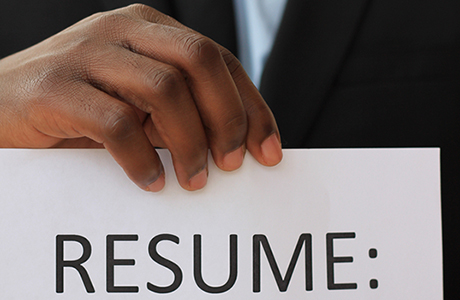How to Get an Interview in Six Seconds
Share with friends:
You already know you could give a great interview: You know what to wear to deliver the right image, and you know what to say to showcase your professional achievements. But that’s if you get the interview. First impressions are lasting impressions; and when it comes to job hunting, sometimes the first (and only) impression you get is your resume.
A study done by TheLadders revealed that recruiters spend an average of six seconds reading a resume. That’s not a lot of time, so how do you make the most of it? The answer lies in the formatting and organization.
So Much To Say, So Little Time
The study used a method called “eye tracking” to assess eye movement and analyze where someone focuses when digesting information and for how long. The eye-tracking technology showed that recruiters spend most of their time on key points such as:
- Name
- Current title/company
- Previous title/company
- Previous position start and end dates
- Current position start and end dates
- Education
The rest was a cursory look for keywords that match the position you’ve applied for.
It may not be a conscious action on the part of recruiters, but if a resume is hard to read, very little will be read at all. Remember, you only have six seconds to show a recruiter you’re a fit for an open position. A straightforward structure will make sure recruiters won’t get distracted and waste valuable time.
- Keep it simple and tidy with plenty of white space.
- Use bullets and lists to maintain a vertical momentum in your details.
- Using standard margins and uniform line spacing and font will help you be circumspect in what and how much you choose to put in there.
- Don’t try and cram a lot of text onto the page.
- Avoid font sizes smaller than 10pt as they will hurt the readability of your resume.
Don’t feel pressured to fit everything on one page, either. The concept of the one-page resume is a bit of a myth anyway.
Use It or Lose It
Because recruiters tend to follow a consistent visual path, make sure to employ a suitable order of information in your organization. Clutter and other distractions like photos or irrelevant data, can drag the eye away from pertinent information or possibly create bias. Because educational background is something recruiters will check for anyway, move those details to the end—especially if you’ve been out of school for a while. Here’s a brief chart to give you an idea what to keep or remove from your resume.
| Use it | Lose it |
| Succinct professional summary that gives a good measure of your experience and offers concrete information | Photos and personal information |
| Email address, phone number, or website (for portfolios) | Physical addresses |
| Employment tenure dates per position (if you’ve held multiple positions at one company, give the tenure for each role as well as your overall company tenure) | Graduation dates if you have a long professional career (for example, 10 years of employment) |
| Professional licensing / certification; involvement in professional associations | Academic activities / clubs if you are not a recent graduate or current student |
Sticking to these use it/lose it guidelines will help make sure that your resume is cleared for the paths recruiters’ eyes usually take. TheLadders’s study has images of heat maps that show the common eye path used, which you can in turn use as a guide for what information should go where. Resumes with content organized in a relevant hierarchy had a better readability and the recruiters seemed to hit the most relevant points. The heat maps showed recruiters’ eyes following a less erratic path and hitting on the information that would determine whether or not the applicant was a fit.
Since you now know the key points recruiters look for, you can restructure how you list your information to make sure what needs to be read is actually read. You can read the study yourself and take a look at the heat maps here. The idea of only having six seconds is daunting, yes, but remember: less is more. The less a recruiter has to work to parse through your resume, the more effective it will be.


